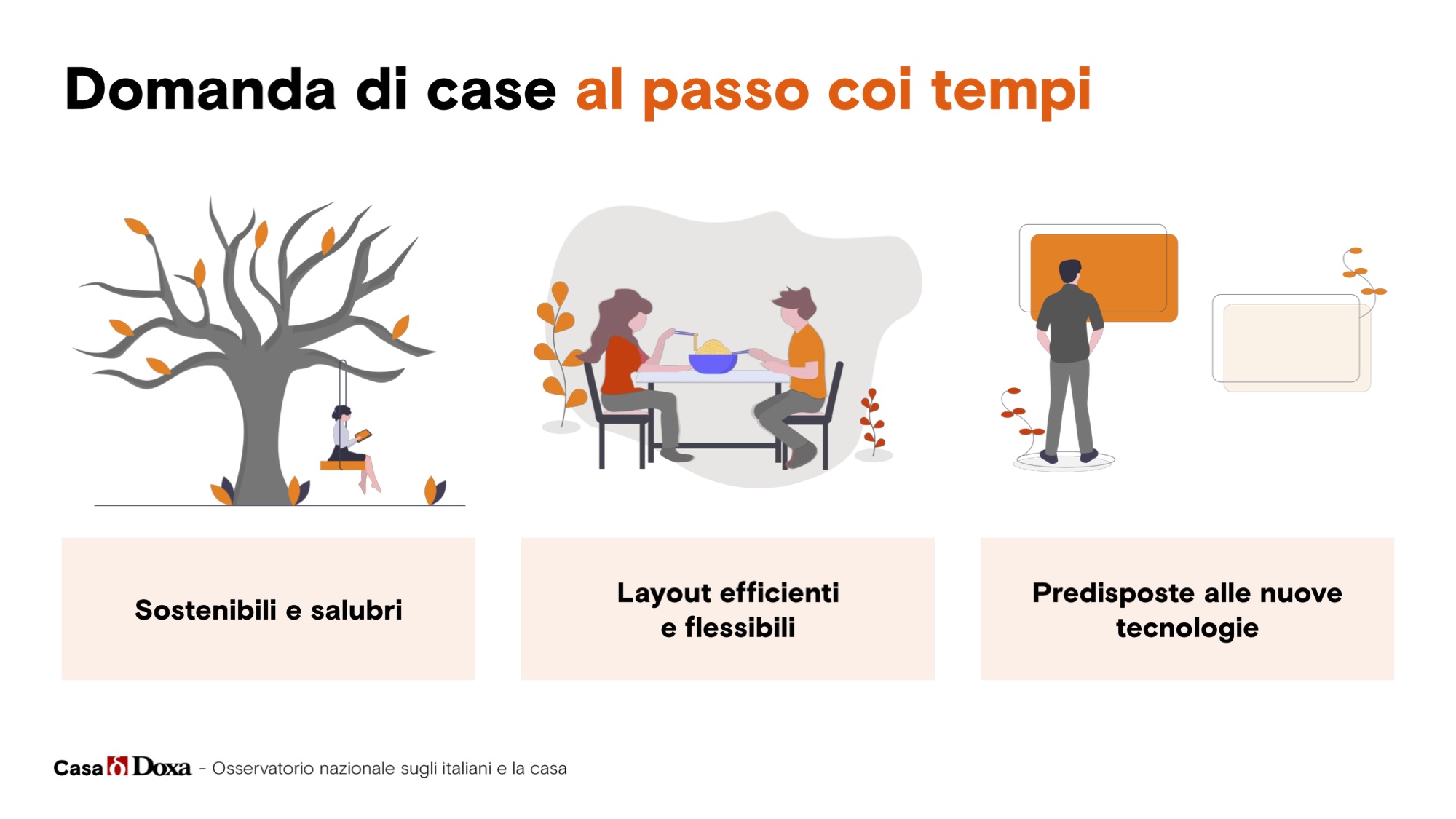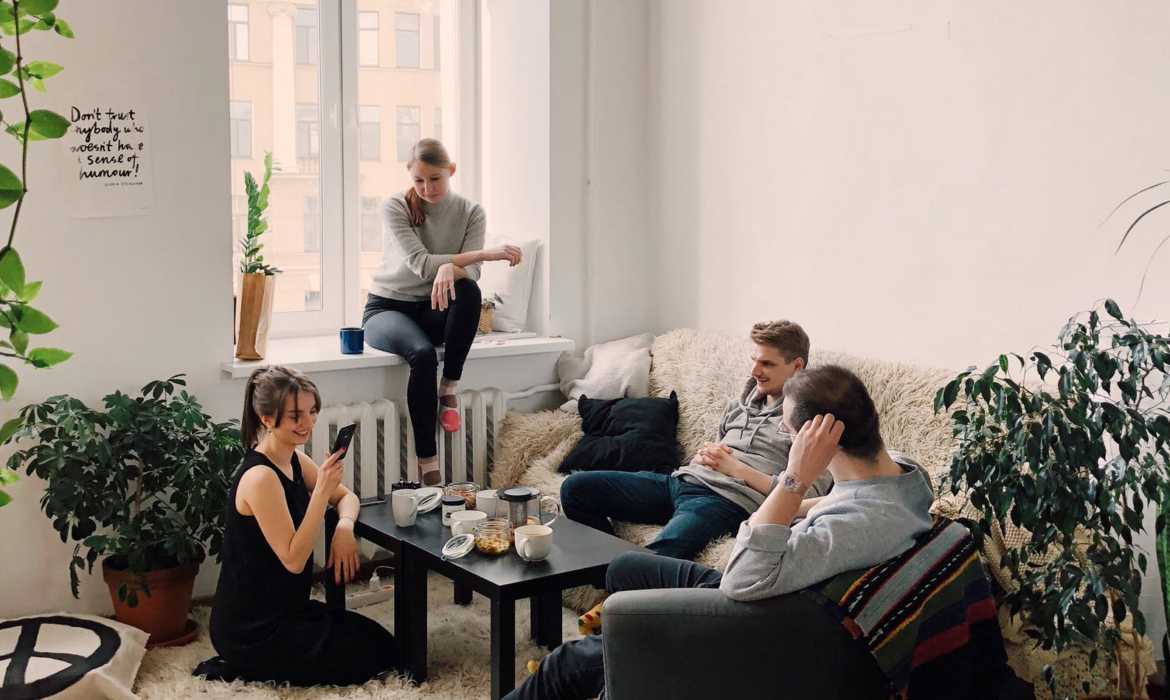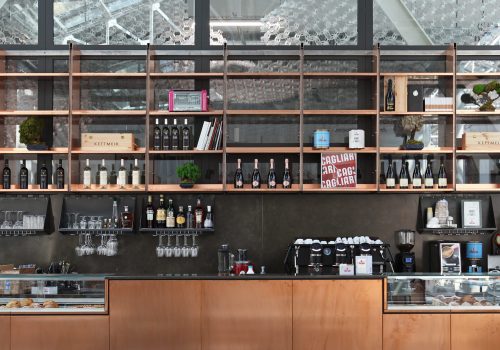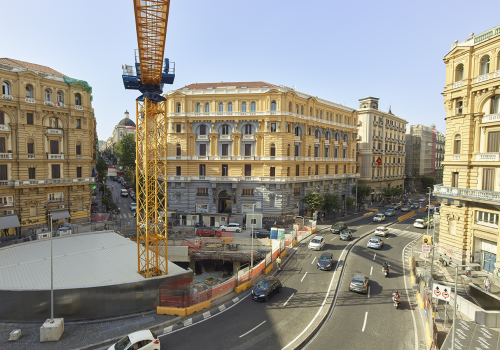The Doxa Observatory records the dissatisfaction of Italians with regard to their own homes and the search for “custom” solutions
The home is at the top of the list of priorities for 9 Italians out of 10 for the Doxa observatory which interviewed seven thousand families across Italy. A bond that remains solid despite the fact that half the sample said they were dissatisfied (or almost) with their own home, especially if they are rentals. Shelter, a space to share and to express one’s self, the transformation from residential unit to home is a matter of several factors: the luminosity of the spaces, thermal and acoustic comfort, security (in terms of the material goods and sanitary conditions) and the presence of simplifying technology that goes hand in hand with energy efficiency and the flexibility of spaces which should adapt to the family’s needs.

Homes in step with the times: sustainable, flexible and technologically advanced
A matter of “quality” that not only affects the home in and of itself, but also extends to the building, and the context around it. «The pleasure of living in it has changed our approach when looking for a home, explains Andrea Tozzi, Retail, Shopper & Crowdsourcing senior researcher at Doxa, and even the presentations of the professionals in the field that increasingly describe the location of the building, the vicinity to services, the recreational spaces nearby». Compared to the past, the Doxa research study highlighted a growing attention to aesthetics, including the common spaces: the kitchen is always central because it is a multifunctional space, but the garden or terrace is also an element that the people who were interviewed defined as essential to enjoying the home. Little attention is given the bedroom (which is only mentioned in terms of the comfort of the bed and the mattress) while the development of the bathroom towards the concept of spa is one of the most significant changes in recent years: a room for the care of the body in which the disposition of the spaces, the selection of materials and the design furnishings are all important factors.
«Technology and sustainability are two strong themes for the observatory this year, continues Tozzi, as are the trends in the evolution of the market, which must take into account the emotional sphere that dialogues with the spaces and imagined solutions. The greatest difficulty described by professionals during the presentation of the Observatory data, was the ability to assess people’s future needs in light of the speed at which change is taking place».
What comes to light most clearly is the change of perception towards the home, the shared spaces, the building. From the choice of materials to the design solutions

One home, a thousand activities
Old vs new
The structural characteristics of buildings are a significant factor in the degree of satisfaction of those who live in them, but at the same time, the Italian building heritage is mostly antecedent to the year 1990, the year that the Observatory chose as the cut-off year. Millenials (52%) and families with a monthly income of less than two thousand euro (53%) suffer the greatest gap between their “ideal” home and their real one. Therefore a change is complex and 30% of those who wish to move abandon their search after just a few months.
«Our Observatory, states Paola Caniglia, home & retail director of Doxa, reveals a profound mismatch between demand and supply in the real-estate business, or a generalized demand for more modern and efficient homes in the face of a real-estate market that mostly offers dated or standardized homes».
People’s expectations therefore evolve much faster than the capacity of players to bring innovation to the supply? The need to regenerate buildings or to renovate them (even just the electrical or HVAC systems) goes hand-in-hand with the design of new constructions that can intercept the desire for “customised” spaces, extremely targeted in terms of services: from the gym to a reception desk, from being well-connected in terms of mobility to smart solutions for that make programming activities as simple as possible.
© ALL RIGHTS RESERVED
translation by Olga Barmine






